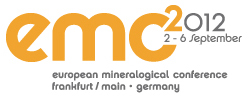|
11a Biologic mineralization and biomimetic model systems |
|
Oral Programme
/ Wed, 05 Sep, 14:15–16:30
/ Room H 8
/ Thu, 06 Sep, 09:45–11:30 / Room H 8
Poster Programme
/ Attendance Wed, 05 Sep, 17:00–18:30
/ Poster Area
|
Mineralization driven by biologic activity is a rapidly expanding field of research, as it is relevant to global processes on earth throughout its history, the reconstruction of the history of life, and the materials science of life. Driven by classical ideas on crystal morphology, an excessive number of studies tried to understand biomineral growth from the surface action of organic molecules added to the supersaturated solution and from crystallization in gels.
However, the last decade of research proved that biological crystallization is very distinct from classical inorganic crystallization processes. In particular, it has been shown that biomineralization can involve amorphous precursor phases assembled from amorphous nanoparticles. A subsequent ordered and oriented growth process produces mesocrystals. Thus, the formation processes of biological and inorganic minerals are fundamentally distinct from each other, even though they share common physicochemical features which are entirely independent of “genes”.
The aim of the proposed session is to discuss and compare nucleation, crystal growth and mineralization processes of both fields: the biological and the non-biological regimes. Assessing similarities and highlighting the distinctness of mineralization processes aims to direct future biomimetic efforts on a more promising route based on a profound understanding of the particular processes that prevail when inorganic and biological materials are formed. The discussion of similar problems from different perspectives will render a large benefit to all participants of the session. Thus, we encourage the attendance of experimentalists as well as modelers. Finally, biomineralogists working on eukaryotic as well as prokaryotic systems are welcome.
